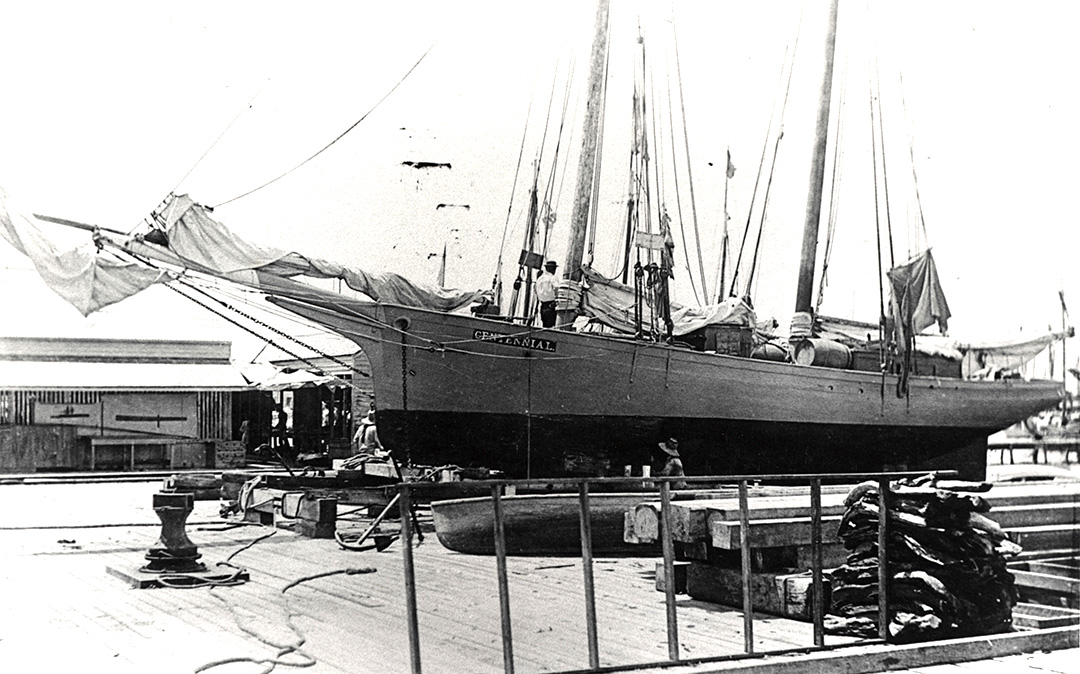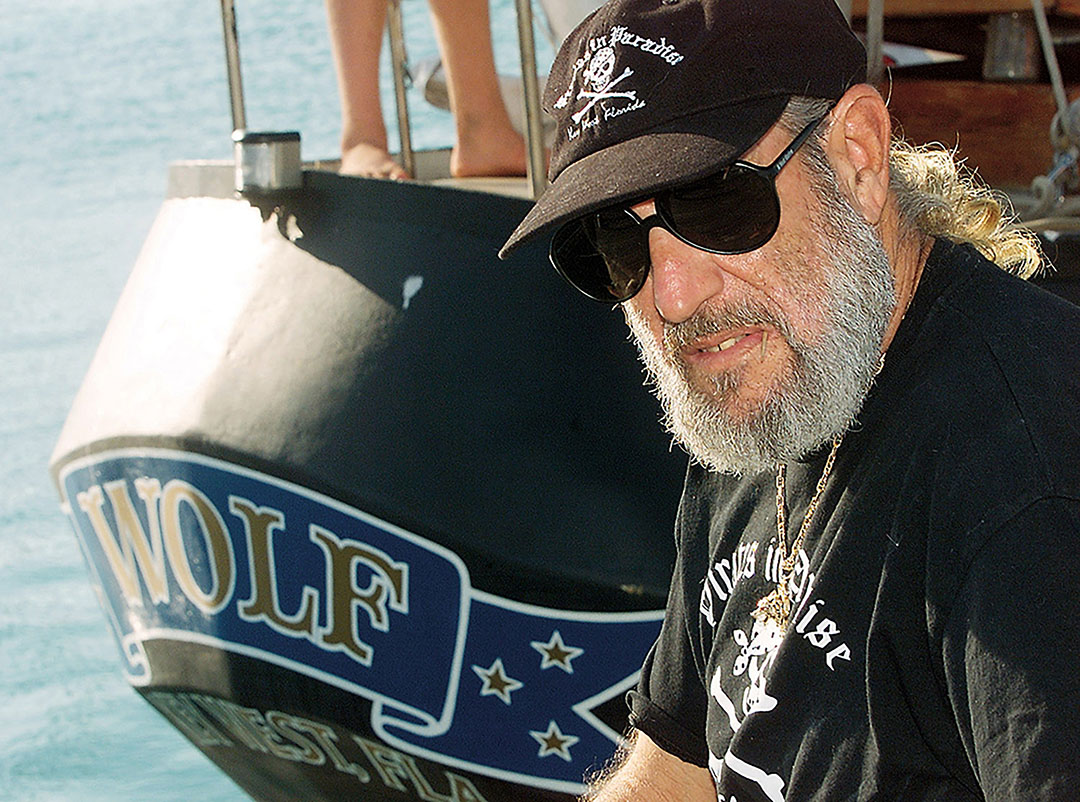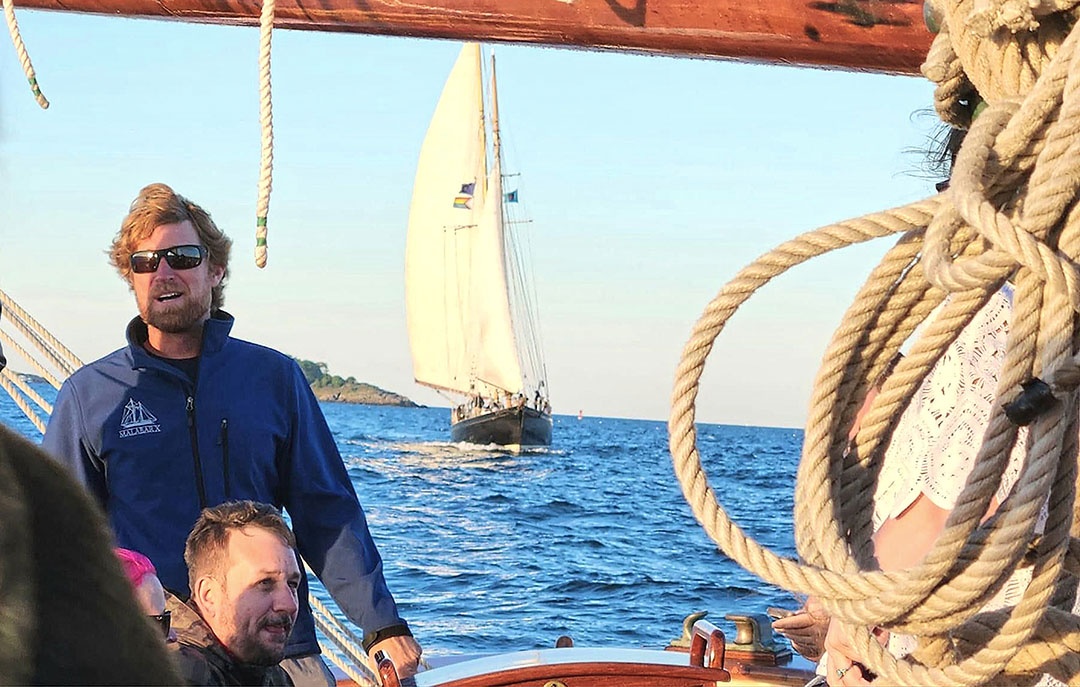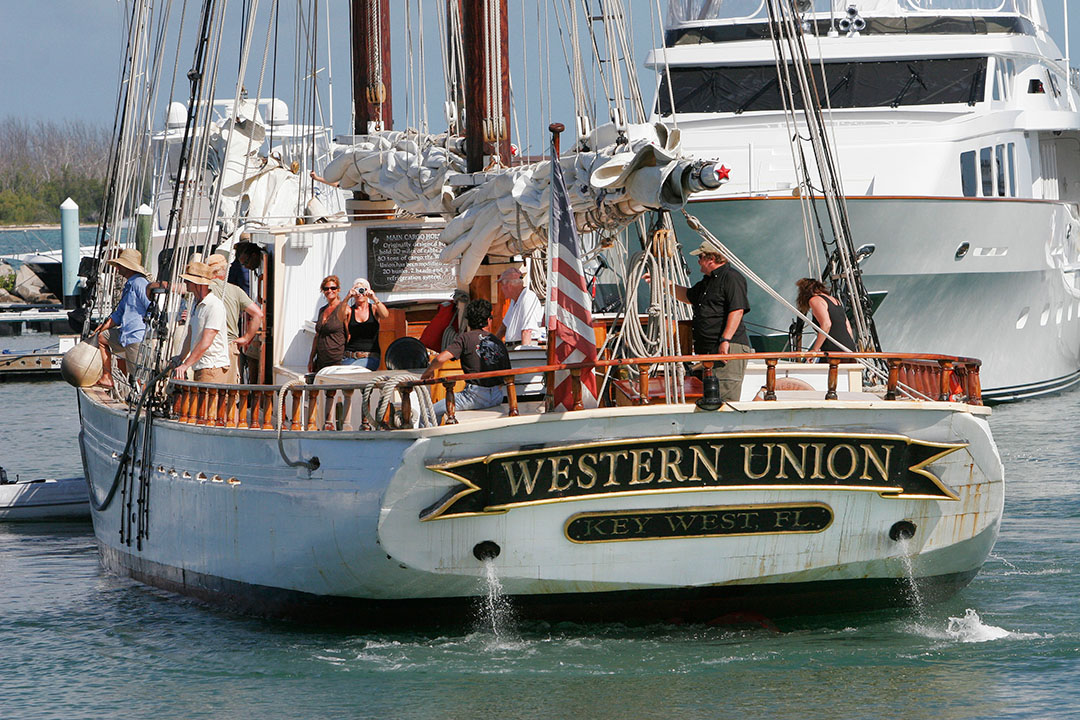

Tall Ships And Their Masters
The noble schooner is easily recognized on the horizon by its majestic silhouette, characterized by its fore-and-aft rigging on two or more masts, the foremast generally being shorter than the main on 2-masted vessels. The schooner’s origins are obscure, but there is evidence of its use dating back to the early 17th century.
Schooners were built as bulk carriers, making them a preferred vessel for many maritime endeavors, including trade, fishing, and privateering. This nimble vessel is known for its speed, maneuverability, capacity to sail close to the wind, and a sleek design that allows for efficient navigation in both deep and shallow waters.
But for all their beauty and lore, life aboard a schooner wasn’t easy. It demanded endurance, discipline, and a willingness to work in harsh conditions, so they needed a seaworthy crew, typically made up of rugged, hardworking sailors, including immigrants, former naval men, and adventurers seeking a life at sea.

Courtesy of Monroe County Library.
Schooner captains had to be skilled navigators, often self-taught, with an intimate knowledge of the sea. They had to be decisive, fearless, and resourceful, as sailing a schooner required quick thinking and adaptability. Many captains were former fishermen or traders who learned their craft through years of experience on their decks, rather than formal training.
Schooners are known throughout the world and are intrinsically linked to the history of Key West. Strategically located at the southernmost point of the United States, the island has long been a hub of maritime activity and has been home to many prominent schooners. The shallow waters and unpredictable currents around the Florida Keys made them the ideal vessels for navigating these tricky routes.
In the 19th century, the island was a bustling port, with schooners being used extensively for fishing, sponging, cargo transport, and even as blockade runners during wartime. Their versatility made them indispensable to the island’s early economic development. Perhaps most famously, schooners played a crucial role in the wrecking industry, salvaging cargo from ships that had run aground on the treacherous reefs. The wrecking industry brought immense wealth to Key West, making it one of the richest cities per capita in the United States in the mid-eighteen hundreds.
During this time Key West also acted as a critical safe harbor for schooners due to its location along major shipping routes. But Key West was also a notorious hideout for pirates. The island’s remote location and labyrinthine waters provided perfect cover for buccaneers preying on merchant ships. Pirates like Black Caesar and Jean Lafitte were rumored to have operated in the area, making Key West a dangerous, yet lucrative, hub for illicit maritime activities.
To combat piracy, the U.S. Navy deployed an anti-pirate fleet from Key West, consisting of schooners and other swift vessels capable of engaging pirate ships, effectively curtailing piracy and bringing stability to the region, allowing legitimate commerce to flourish. This campaign cemented Key West’s role as a key player in securing the waters of the Gulf of Mexico and the Caribbean.

Courtesy of Monroe County Library.
In 1823, the U.S. Navy established Naval Station Key West, transforming the island into a strategic military outpost, ensuring the safety of merchant vessels and strengthening the nation’s naval presence in the region.
And though these activities seem a distant time gone by, whispers from the past remain. Today, Key West is a haven for schooners and sailing enthusiasts. Annual events like the Wrecker’s Cup and the Lighted Boat Parade celebrate the island’s rich maritime heritage, and historic vessels have been restored and are primarily used for tourist activities. Offering sunset sails, snorkeling trips, and educational excursions, these ships provide an historically significant eco-friendly alternative to many of the modern catamarans and party boats.
Among the schooners homeported in Key West today, the Schooner Wolf is the flagship of the Conch Republic and a living testament to the enduring spirit of Key West’s seafaring heritage. Designed as a replica of 19th century blockade runners, the Wolf has participated in numerous maritime festivals and cultural events. Most notably in 1984 when the newly constructed Wolf arrived in Key West under the command of Captain Finbar Gittelman and assumed the role of flagship for the great battle for independence against the U.S. that year, which gave birth to the Conch Republic.

Photo by Rob O’Neal
Captain Finbar, “The Ancient Mariner”, as he called himself, was the admiral and First Sea Lord of the Conch Republic Navy, and one of Key West’s most colorful maritime figures, known for his adventurous spirit and deep love for the sea. And though Captain Finbar passed away in 2024, his legacy and the tradition he cherished is still alive and thriving in the young sailors he salvaged and mentored from the docks of Key West Bight.
Some of these young wharf rats and former crew members of Finbar’s became the best of the schooner masters of today, carrying forth the legacy of the schooner, seamanship, and the Ancient Mariner. Seth Salzmann of the When and If and Malabar X, Josh Rowan of the Hindu, Pablo McGrail of Appledores 1 and 2, and Cayman Elston to name a few.
Captain Salzmann worked with Finbar as crew when he was very young. Captain Finbar saw great potential in the wayward lad and bestowed great trust and confidence in him early on, planting the seeds of adventure and opportunity that flourished into the master he is today. By the time Captain Pablo McGrail first met Finbar, McGrail was already an accomplished sailor in his own right, having learned to sail schooners in his youth and gone on to captain several regatta championships. McGrail also brought the first catamarans to Key West when he launched the Sebago fleet.
McGrail and Finbar became close friends, sharing their love of the sea and sailing. McGrail said that Finbar was the one person he’d call captain, because it’s more than a license, it’s a title one must earn, and doing so goes beyond just piloting a boat. The title of Captain implies a true man of the sea, a nautical expert, and a leader. The title gives you a sense of who this person is. A person of strong mind, courage, and honor–far more than a piece of paper bestows on its holder. Captain Finbar was such a man.
Salzmann and McGrail still carry a deep affinity for Captain Finbar and his vision, and they view working on schooners as a proven pathway to building a lasting sense of character. These proteges tell us that Finbar truly believed that everyone is capable of learning about the ocean and learning about boats, and that it is now their duty as captains to pass the torch to the next generation and keep the tradition of real marlin spike seamanship alive. It’s a dedication of spirit few realize working on snorkel and party boats. Captain Finbar wanted this opportunity for anyone willing to put in the work, and in a male dominated industry, Finbar was one of the first to realize an all-female crew.

Photo courtesy of Sunset Sail Key West.
Salzmann and McGrail echo the words of Captain Finbar: the classic schooners today are essential to the story of Key West and our island’s seafaring heritage. These vessels and the continued development of young mariners and masters must be prioritized by our civic and business leaders. These classic vessels and their wooden hulls require constant upkeep and maintenance, and yet none of the vessels under these young masters’ command have received funding from the Key West community at large.
Sadly, the most famous Key West schooner, the flagship of the City of Key West and the flagship of the State of Florida, the schooner Western Union is crumbling on dry dock, despite having sufficient community and private funds donated for complete restoration a decade ago. Mismanagement and absence of a qualified and dedicated master now has her on the hard and in decay, perched just feet from the waters she once sailed.

Photo br Rob O’Neal
The last wooden schooner to be built on the island of Key West, the schooner Western Union launched from Simonton Street in 1939, just as the world was switching from sails to steam. The Western Union was originally built as a cable laying ship for the Western Union Telegraph Company and played a crucial role in maintaining communication lines between the United States and the islands of the Caribbean.
The vessel’s robust construction and adaptability made it an essential part of the region’s maritime infrastructure. Proudly berthed at the historic Key West Seaport near the Schooner Wharf Bar, in her later years the Western Union served as a sort of floating museum and tourist attraction, offering sunset sails and private event charters.
In the 1980s Jimmy Buffett and Mariel Hemingway sailed the Western Union on an historic voyage from Key West to Havana in an effort to rekindle the maritime connection between the United States and Cuba. The journey highlighted the vessel’s enduring legacy and its role in cultural exchange.
But now the Western Union is disintegrating on Stock Island, and though she may never sail again, she can still do her part to preserve the magical maritime heritage of Key West. Her legacy should persist and help ensure that Key West’s maritime traditions continue to thrive for future generations. Captain Finbar was a leading advocate for preserving Key West’s schooner and maritime traditions. Now his proteges are carrying the torch, maintaining their classic schooners, and managing the business operations that support these historic vessels.

Photo by Jonathon King.
In honor of these men and their efforts, and in maintenance of Key West’s storied maritime heritage, it is important to restore the flagship of Key West, the schooner Western Union–perhaps not as an active sailing vessel, but as a symbol of the lasting endurance of the schooner tradition, and to serve as an inspiration for the next generation of mariners, masters, and harbor pilots.
Key West artist and Captain David Wegman–the first person from Key West to sail around the world–is offering to champion a sustainable restoration and permanent home for the schooner Western Union at the roundabout at Truman Waterfront Park. The permanent installation would present the unrigged hull of the Western Union in the center of the roundabout entrance to the Truman Waterfront, along with an all-weather Key West schooner heritage exhibit. While a comprehensive restoration of the Western Union would require upwards of five million dollars for complete restoration and an endowed maintenance fund, Captain Wegman’s proposal can be accomplished for three hundred thousand, and while the Western Union would never sail again, our community’s schooner legacy would have a permanent home on the waterfront.
PURCHASE YOUR COPY OF OURKEYWEST MAGAZINE: ISSUE 5
- Tall Ships And Their Masters - November 15, 2025
- In Defense of Rum - August 22, 2024





 Tall Ships And Their Masters
Tall Ships And Their Masters Goombay Festival
Goombay Festival Mario Sanchez – The Birth Chart
Mario Sanchez – The Birth Chart My Job Interview with Jimmy Buffett
My Job Interview with Jimmy Buffett